KUALA LUMPUR, Aug 22 — From government-linked and private corporations to public transportation, auxiliary police or polis bantuan as they are called in Malay, have played a pivotal role in maintaining public security as a law enforcement entity alongside their Royal Malaysia Police (RMP) counterparts.
There’s an estimated 4,000 active auxiliary police personnel stationed in over 70 agencies within Klang Valley alone, but how much do you know about the roles these men and women serve in crime prevention and law enforcement?
Malay Mail speaks to Kuala Lumpur Crime Prevention and Community Safety Department (JPJKK) chief Senior Assistant Commissioner Datuk Azman Ayob to find out more about this support police unit.
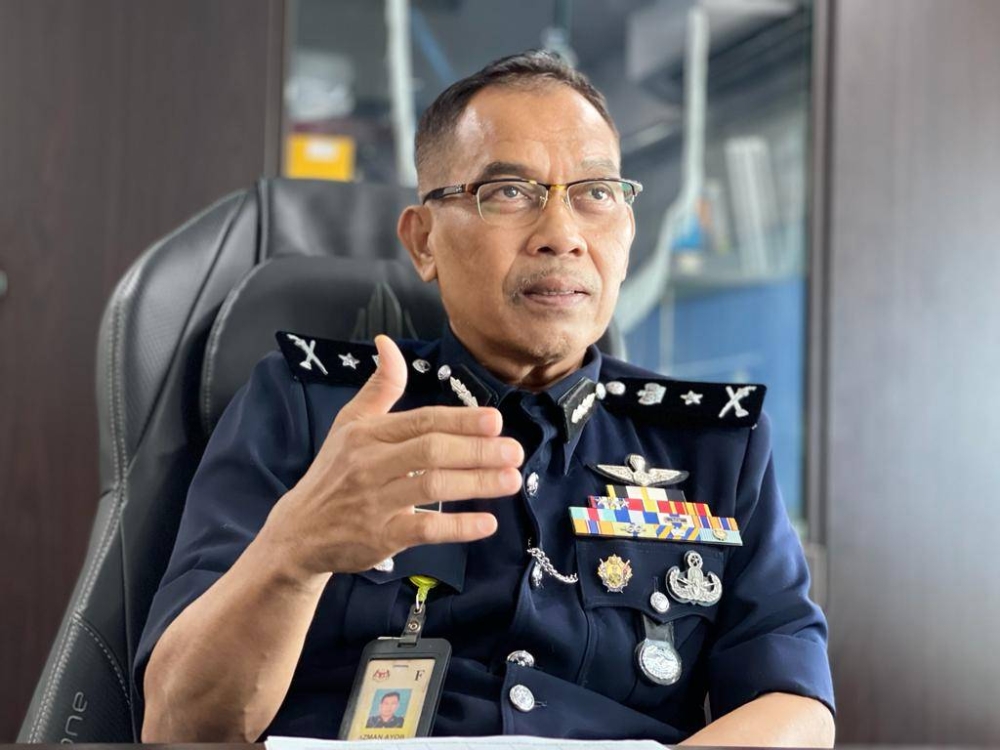
Who are the auxiliary police?
Auxiliary police officers, established in accordance with Part IX of the Police Act, are designated full-time employees of the agencies or corporations they serve, but are appointed by the Inspector-General of Police.
Under Section 47 of the same Act, they are empowered to perform policing duties in a designated area under the control of the auxiliary police officer’s serving agency.
They are remunerated on a slightly different scale than regular police officers because they are obliged to serve voluntarily as stipulated under Section 49A of the Police Act.
Auxiliary police officers share a similar hierarchy of police ranks with RMP, from constables to the most senior auxiliary police officer bearing the rank of Superintendent within the agency they are employed.
They are commonly distinguished with a Polis Bantuan badge which might include their employer’s logo on their uniform's left sleeves from the otherwise standardised police uniform.
Like any other law enforcement authorities, auxiliary police are audited, inspected and reviewed by JPJKK’s Resource Support Coordination division on a regular basis to ensure strict compliance by the employing agencies.
Non-compliant agencies may risk censure and revocation of their services, including difficulties in renewed applications in the future.
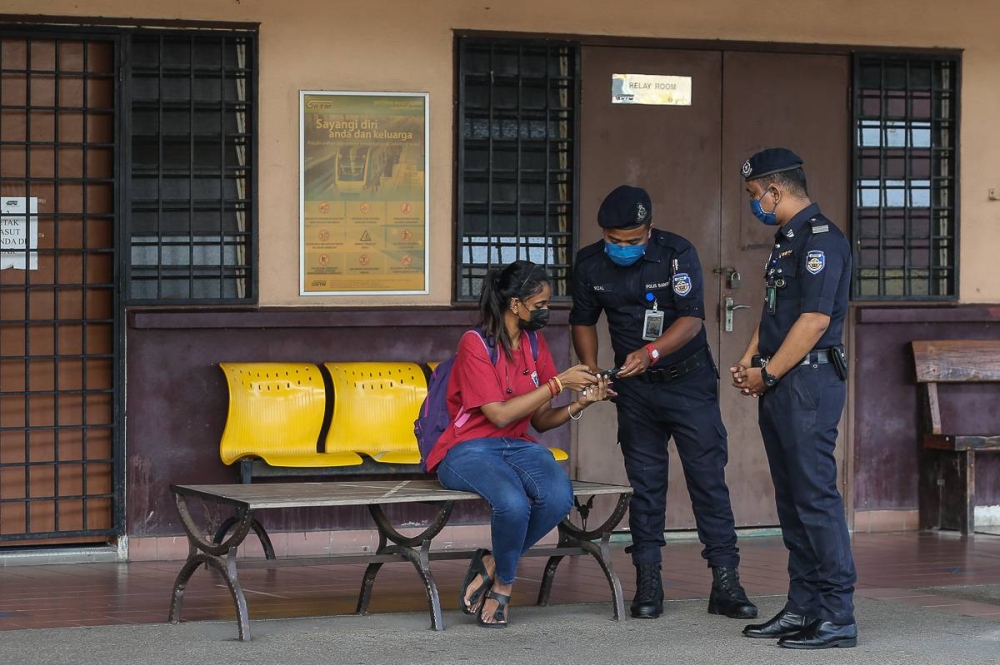
Where are they usually stationed and what do they do?
Auxiliary police officers are usually employed by financial institutions, mass transit operators, corporate entities, government-linked agencies, shopping malls and public utilities services.
They serve as the common law enforcers in those places.
Their responsibilities include patrolling and sentry duty at the premises they are assigned to; crowd control; stop and search; protection and escort of their employer’s assets; crime prevention and making arrests when necessary.
Polis bantuan are usually unarmed, but they can carry firearms, which are registered under their employer's name if necessary.
However, this is subject to RMP's firearm licence procedures.
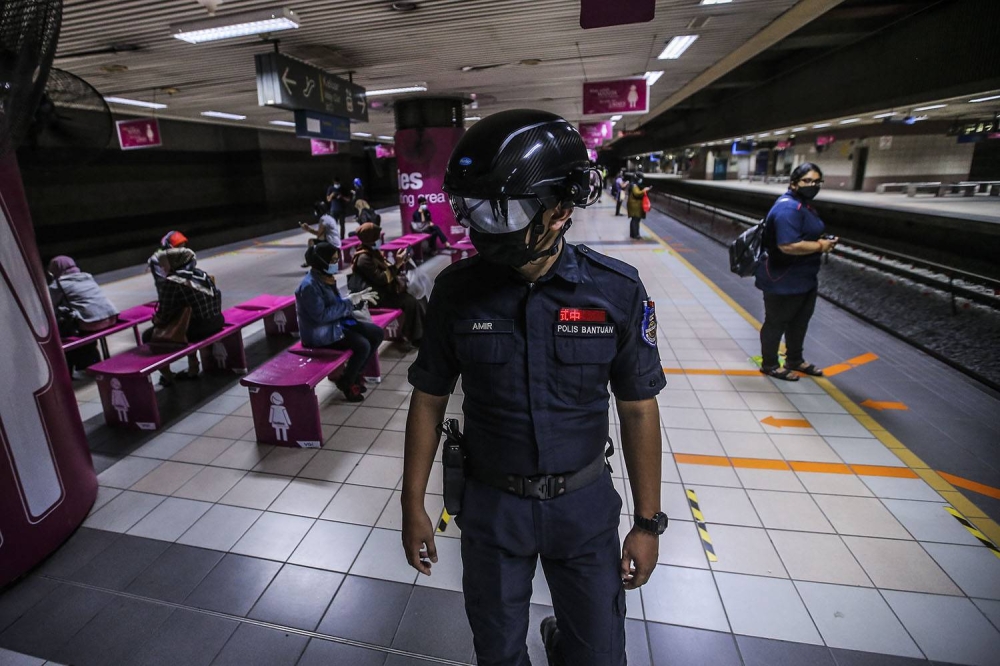
What’s the difference between polis bantuan and those under the RMP?
Auxiliary police have all the existing powers of a regular police under the RMP.
The exception is that they can exercise these powers only within the boundaries of their respective employing agencies.
As a legitimate law enforcement unit, auxiliary police officers are also supplied with a police authority card in either blue or yellow.
They have a limited responsibility in manning roadblocks and engage in motorised patrols when deployed together with RMP staff.
What the auxiliary police cannot do are investigate cases, act as riot control agents, and perform court duties and special operations under the General Operations Force.
Auxiliary police are still required to obey instructions from RMP officers in a joint operation.
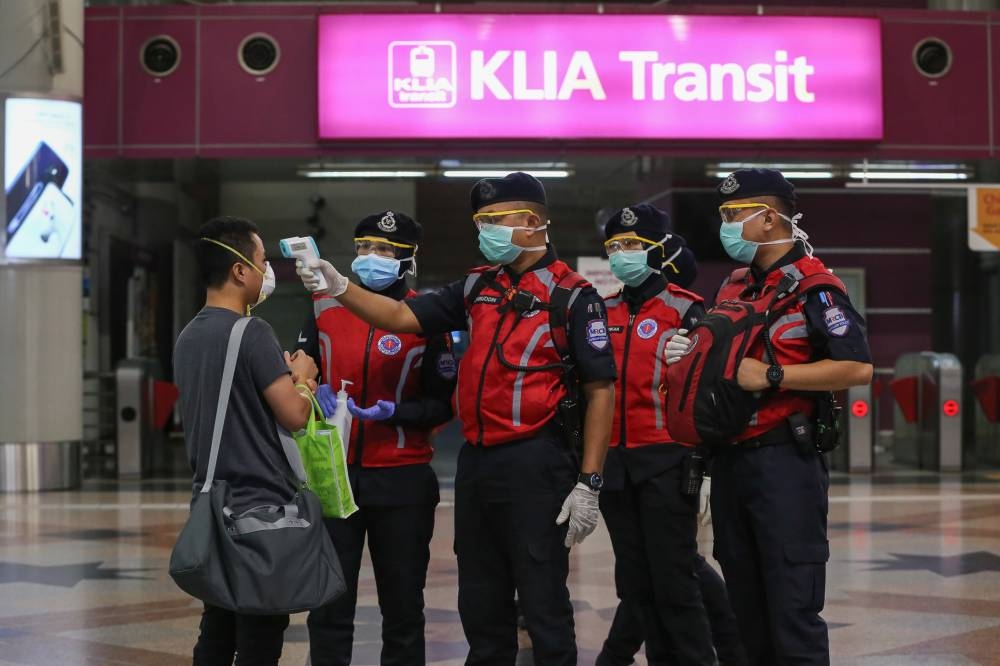
How to become an auxiliary police officer?
Those keen to become an auxiliary officer must first meet certain age, physical, citizenship and academic criteria set by RMP. They must first be Malaysian and at least 18 years old from the time they are appointed.
Male candidates must weigh at least 50kg and be at least 162cm tall while women must weigh at least 45kg and be 152cm tall.
Next, applicants must undergo an interview before representatives of the employing agency and the RMP.
Candidates are evaluated based on their Sijil Pendidikan Malaysia (SPM) qualifications. They must have a minimum pass in six subjects, including Bahasa Malaysia and History for placements in either private or government-linked agencies.
Candidates are also required to pass a fitness test set out by RMP and undergo medical screening with selected medical staff appointed by the respective employment company/agency.
Those who passed the first stage will be assessed further for any black marks and security risks by the Criminal Investigation Department and Special Branch under the RMP as well as the National Registration Department.
Chosen candidates undergo nine weeks of basic training as police trainees.
The training, conducted by the RMP at several police academies nationwide, is based on syllabi prepared by Bukit Aman’s Training Division.
Recruits will also need to learn law enforcement and the business nature of their employers, among others.
All expenditure during the nine-week training is fully covered by their employers.
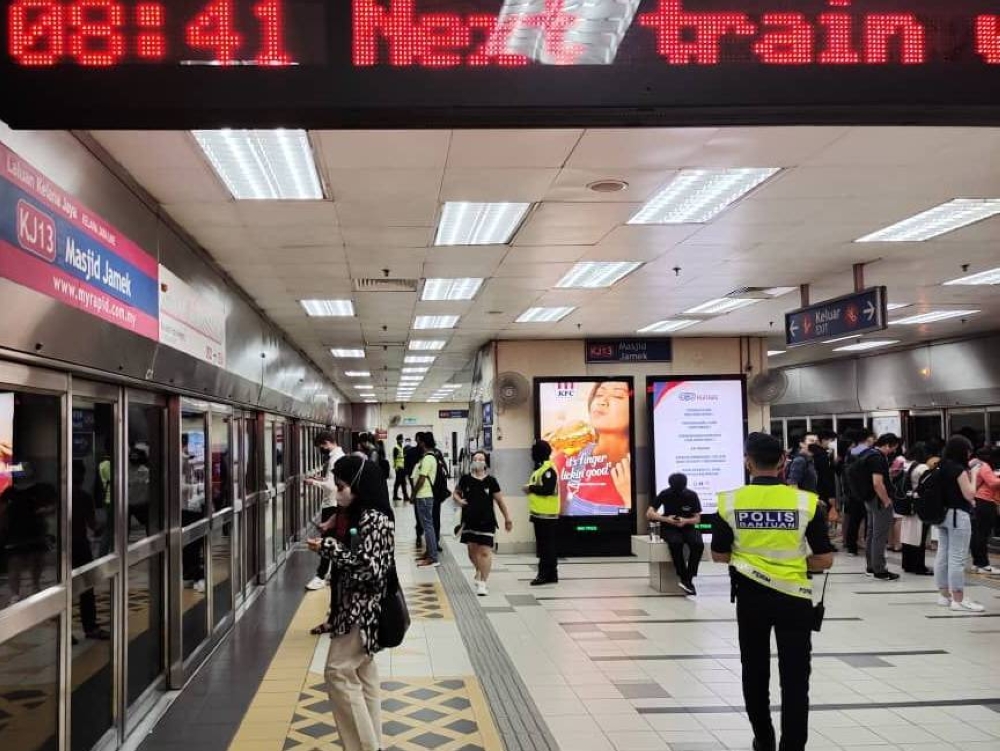
When is it an offence that may lead to an arrest by an auxiliary police officer?
Any act against the law found to be committed within an auxiliary police officer’s jurisdiction is considered a criminal offence.
Members of the public who disregard the orders of an auxiliary police officer on duty are also liable for criminal prosecution under Section 186 of the Penal Code for obstructing a public officer from carrying out their duties.
If a crime is committed beyond the jurisdiction of an auxiliary police officer, a citizen arrest can still be made on the condition of notifying the relevant authorities immediately following an arrest.
Why do we need an auxiliary police force?
Auxiliary police serve to complement the roles played by RMP staff and fill the void in areas where conventional policing may seem ineffective.
The auxiliary police also act as a support unit to RMP.
For example, in certain circumstances, their jurisdiction can extend beyond the limits of their employers’ premises with written permission from a state police chief.
The establishment of auxiliary police also serves to reduce dependency on existing RMP manpower in terms of general policing duties by being autonomous in matters related to the security of their company's premises and facilities.




















